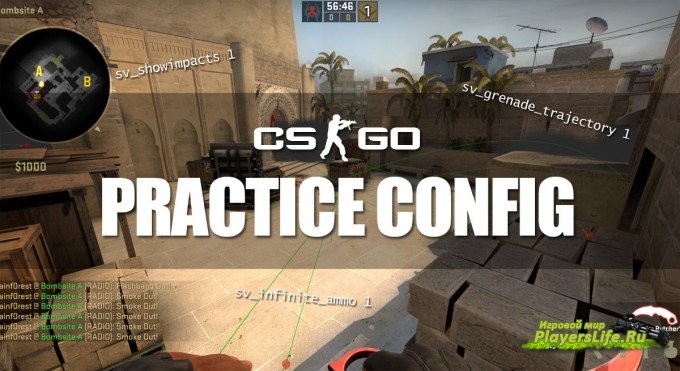WHAT IS CS 1.6 CONFIG AND FULL CFG SETTING!
In this topic, I will tell you what configs in cop are and how to use them.
detailed configuration of the config in ks 1.6
Config (config) - a configuration file used to store the settings of various programs.
In CS, this is the same file with the following game parameters.
1) Client (what we change by downloading and installing any cs):
- control parameters in the game (assignment of keys).
- mouse settings.
- settings for video processing (graphics) in the game.
- sound settings in the game.
2) regarding the server (server.cfg, amx.cfg configs, etc.)
- server settings
3) regarding gameplay
- scripts (aliases)
In CS, aliases are a different set of actions that are performed automatically when a certain key is pressed (for example: a weapon purchase script, a jump script, various prohibited combinations, etc.)
All configs are files of the form “name.cfg”,
where: Name - the name of the config. Cfg - config extensions.
Where are configs stored in cs?
-for non-steam (pirated) D: \ CS \ cstrike_russian or D: \ CS \ cstrike where D: \ is your hard drive.
-for steam after the 2013 update D: \ Steam \ steamapps \ common \ Half-Life \ cstrike
-for steam before updating D: \ Steam \ steamapps \ ACCOUNT NAME IN STIM \ counter-strike \ cstrike or, if there is a Russian CS, then the last folder changes from cstrike to cstrike_russian
Configs for Counter Strike can be opened, viewed and edited using any text editor, such as Notepad or World pad. Opening the config you will see various parameters in it. All the config commands are identical to the commands that you can register in the console by directly launching the CS itself.
config configuration in cs 1.6
Types of configs.
Let's see what types of configs are in CS 1.6, how they are launched and what to do with them:
- autoexec.cfg - always, automatically starts when the game loads the very first. When writing scripts and your config, it is recommended to write aliases (and any other settings that you will no longer change) exactly here, because they will apply to all configs launched later and you will not need to duplicate them if you want to create several different configs. If this kogfig is not in the cstrike folder, then you can create it yourself, but with the name “autoexec.cfg”, the only way it will be the first to start automatically.
- config.cfg - a standard config that always starts automatically second after "autoexec.cfg". In it, by default, the standard control settings in the game are registered (there are binned buttons) and all other settings (graphics, sound, etc.).
- userconfig.cfg - user config containing the settings for a specific user. This config may not be in the game by default, you can create it, and you can write any name, for example, “myconfig.cfg”, “ru.cfg”, “bot.cfg”, etc., it doesn’t matter because its launch is carried out in 2 ways, see below:
1st - at the end of the settings, you can specify the command “exec userconfig.cfg” (extract userconfig.cfg) in “config.cfg” while your config will automatically start in the game.
2nd - you can write the command “exec userconfig.cfg” directly in the game in the console. In this case, your config will only be launched in this game, and when you restart the CS, you will need to repeat the procedure. Also in this case, to run the config correctly, we recommend that after the command “exec userconfig.cfg” be entered the command “reconnect” (reconnection) is all in the same console.
Note 1: userconfig.cfg is the name of the config, so if your config is called differently, you must enter YOUR name!
Note 2: the “exec” command is directed to the / cstrike or / cstrike-russian folder so your config should be located there. You can also create a separate folder for configs in the / cstrike or / cstrike-russian directory, then in the “exec” command you should specify the path to the config, for example, your folder is called myconfig, and the config in it is spawn.cfg, then you should write - exec myconfig / spawncfg.
Note 3: in most cases, config.cfg already has an exec start line in the end, "userconfig.cfg", in which case you can simply create your config called userconfig.cfg and it will start automatically.



Leave a reply